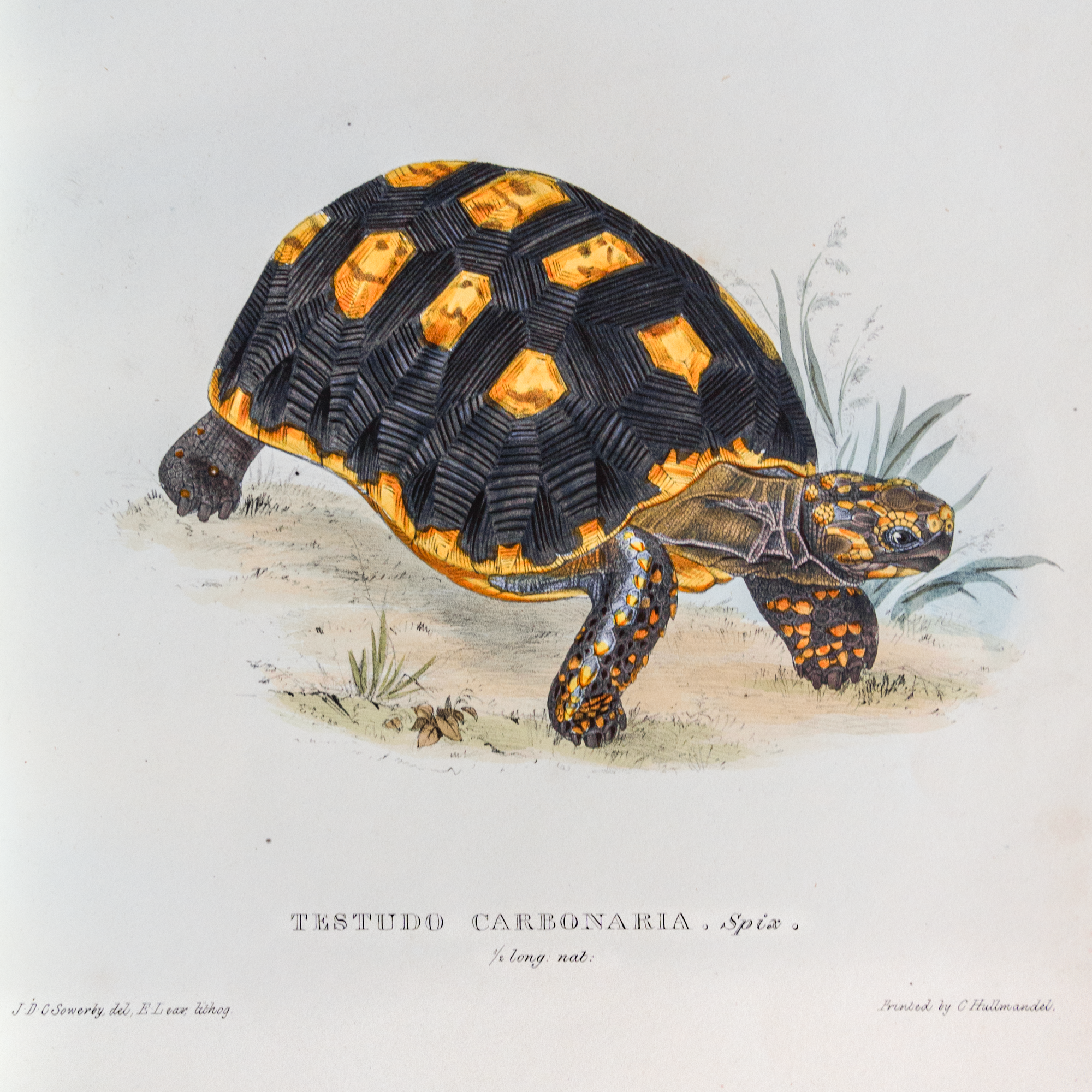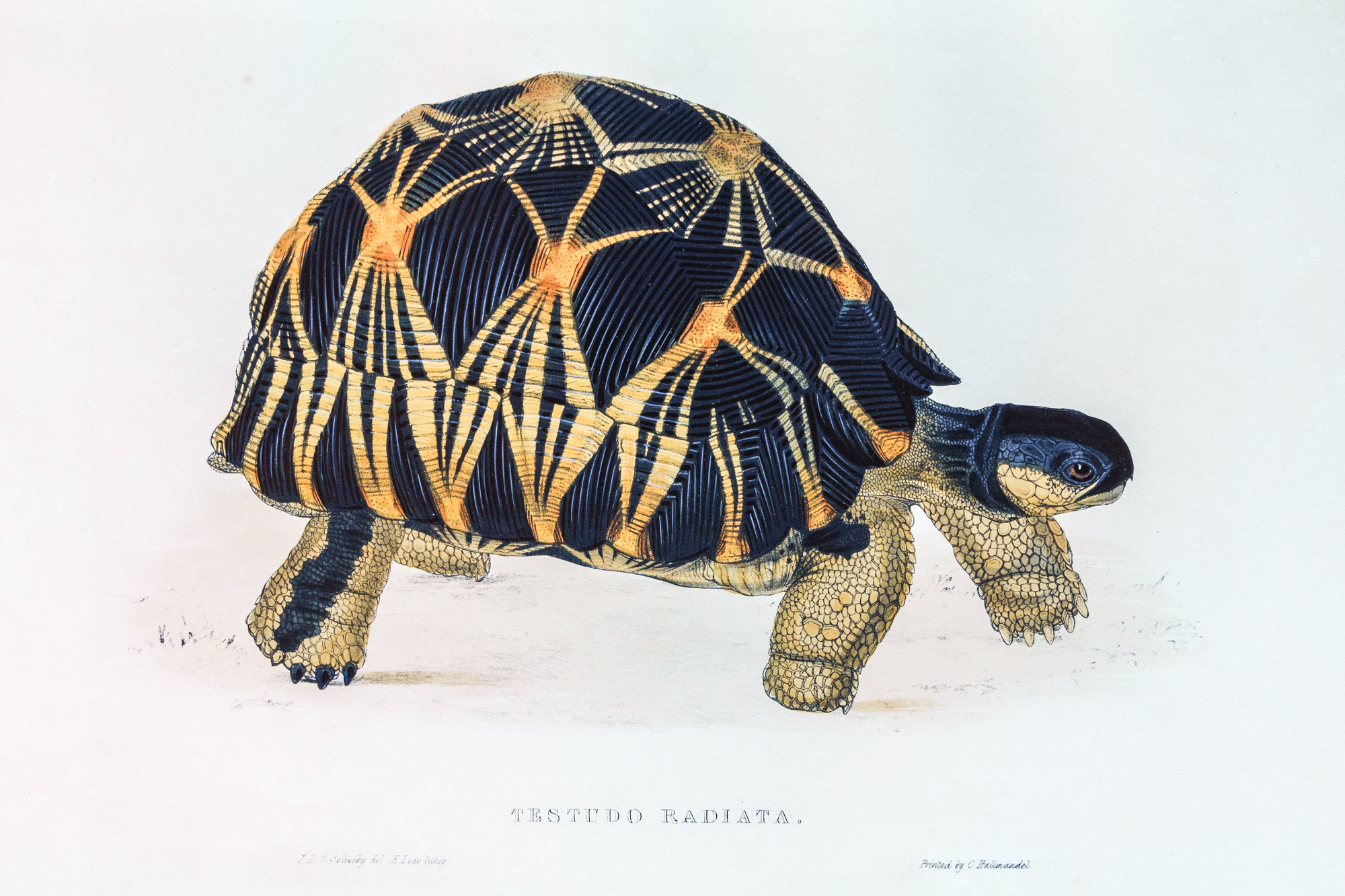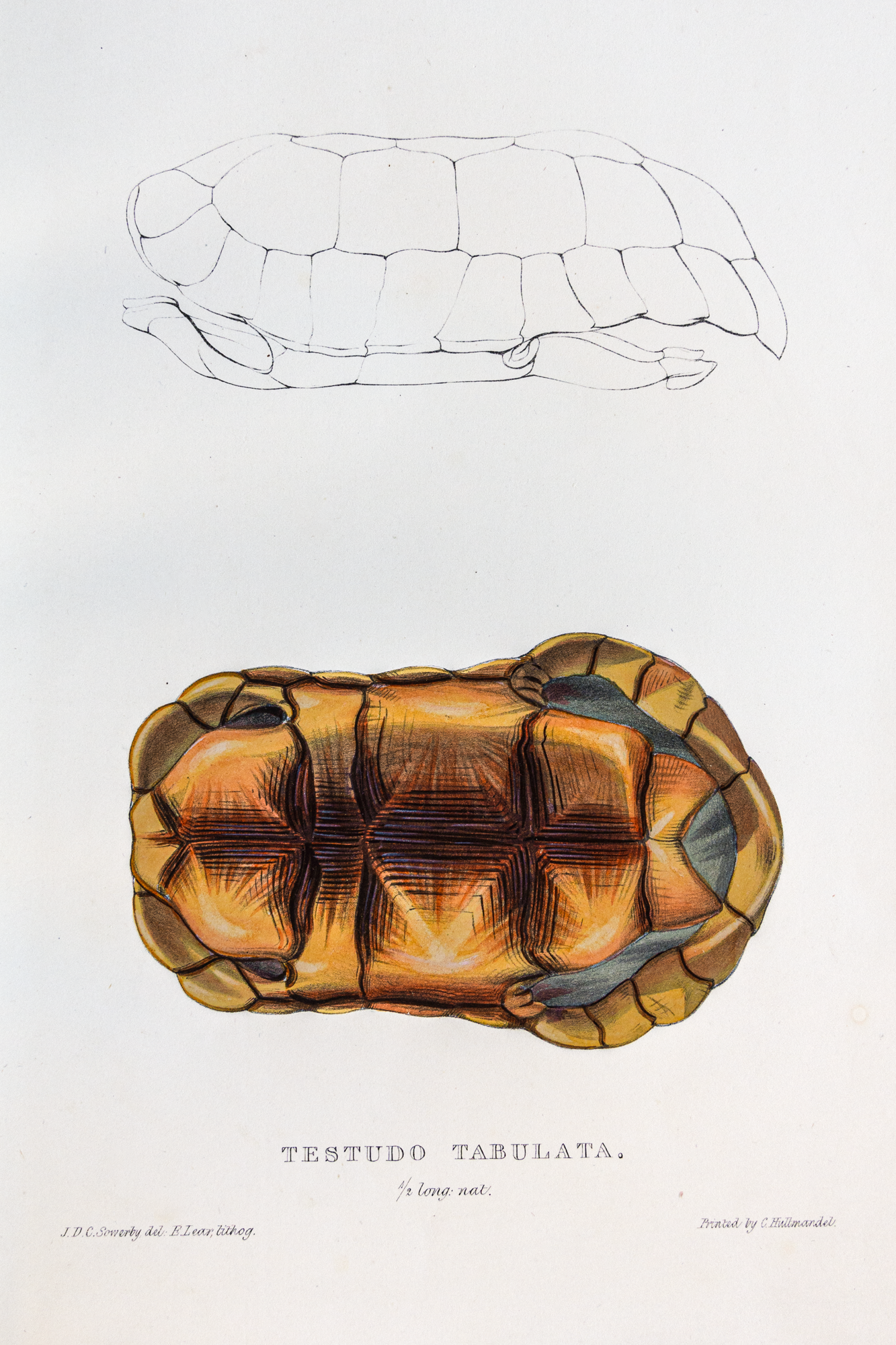

This is considered one of the best collections of illustrations of tortoises, terrapins and turtles ever produced with the brilliant lithographs by Edward Lear based on the illustrations by James de Carle Sowerby. It is based on the writings of Thomas Bell who was Professor of Zoology at King's College London from 1835.



The original author of this work was Thomas Bell who was Professor of Zoology at King's College London in 1835 and a founder member of the Zoological Society of London. He had a special interest in tortoises and his Monograph of Testudinato* is said to be the first comprehensive account of tortoises ever written. He started publishing 1832-1836 but unfortunately the publisher ran into financial difficulties and publishing then ceased until in 1872 when the work was taken up by the publisher Henry Sotheran as Tortoises, Terrapins and Turtles.
This new and enlarged edition of Thomas Bell's Monograph uses the original plates drawn by James de Carle Sowerby and lithographed by Edward Lear who captured the unique characteristics of these animals. Colouring was by Henry Bayfield and printing by Hullmandel. This group was the best London had to offer at the time, and perhaps the best ever, in the printing of high quality, large sized, hand coloured lithographic plates.
(The plates have the acknowledgements JD Sowerby del E Lear lith -- printed by G H Hullmandel )
The British Museum has three copies of the Monograph with the original drawings by Sowerby and "pattern plates " for the use of the colourists and a set of India Proof lithographs by Lear.
* Testudo is the Roman term for a roof of shields made by soldiers to protect them from attack from above.
rgsp 598.13 S731c 1872 d Shelf 11, Cabinet 4.
Noakes, Vivien, Edward Lear 1812-1888 Royal Academy of Arts London, 1985
Orr, Hugh, The Golden Age of Large Folio Published Prints. 1825-1850, RGSSA pamphlet 2021.
James de Carle Sowerby was a naturalist, mineralogist and illustrator. He was the son of James Sowerby (1757-1822) a botanical artist and conchologist and his wife Anne de Carle (1764 -1815). James de Carle Sowerby studied conchology and became particularly knowledgeable in fossil forms advising on, and arranging, the collections of a number of prominent people including the Marchioness of Bath. He prepared the plates for The genera of recent and fossil shells begun by his father and also provided illustrations for his father's classic Mineral Conchology of Great Britain 1812.
James de Carle Showery was elected a fellow of the Linnaean Society in 1823 and was an original member of the Zoological Society founded in 1826. Together with his cousin Philip Barnes and others, in 1838, he founded the Royal Botanic Society and gardens where he held the position of secretary for thirty years.
Edward Lear was born into a middle class family that was to fall on hard times. He was the second to last of a large number of siblings whose number has been estimated variously as either 17, 19 or 21. Edward's mother, Ann Lear, came from a wealthy Durham family but the inheritance passed her by and the bitterness about this stayed with her all her life. Edward did not get on with her and he was brought up by his elder sister also named Ann who was 26 years his senior and never married. They remained close all their lives and "formed a family within a family ". Lear suffered from ill health all his life and is thought to have had a form of epilepsy, which was considered a disgrace at the time so he tried to hide his seizures and deny his condition.
Drawing and painting were important to Edward's sisters and a room was set aside in their house just for that purpose. The earliest of his known work, from 1828, is "an album of birds, butterflies and flowers" now held at the Houghton Library, Harvard University.
Desperate to earn a living, and with his talent for drawing and painting birds recognized by members of the Zoological Society, at the age of only 19, Lear embarked on a most ambitious project - the publication of Illustrations of the Family of Psittacidae or Parrots. Lear issued the Family of Parrots in 12 folio parts with 42 hand coloured lithographic illustrations from 1830-1832. While these were admired for their vivid colours and artistic quality Lear was not able to make it pay and could not afford to complete the last two of the 14 parts originally planned. Much of his stock-and the copyright-was bought by John Gould.
Lear then went to work for Gould initially teaching his wife Elizabeth the art of lithography and then helping her with their first publication A century of birds hitherto unfigured from the Himalayan Mountains. Lear continued working for Gould, although not entirely happily, contributing to his subsequent publications including 68 plates for Gould's The birds of Europe (1832-1837) and 10 plates for A monograph of Ramphastidae, or family of toucans. (1833-1835).
Edward Lear was an innovator in the art of lithography and led to it replacing engraving as the best and most economical way of reproducing fine prints of birds and animals.
From the early 1830s Lear had also been interested in landscape drawing and painting and from the mid 1830s onwards he concentrated on this more and more.
The following summary of his work demonstrates his impressive productivity -
"Edward Lear led an unusual but highly productive life. When he died in 1888 he left over 7,000 watercolours of his travels, about 2,000 studio watercolours including sets of the illustrations to Tennyson's poems, more than 300 oil paintings which vary in size from six inches to fifteen feet, two books of natural history illustrations and more than 100 additional published ornithological lithographs, five travel books and five or six manuscripts prepared for publication, four books of Nonsense, a dozen published songs, extensive diaries and several thousand "delightful" letters." (Noakes, p.10, Introduction)
Edward Lear was something of a loner (he never married) with constant ill health but had prodigious artistic talent and is also famous for his nonsense verse such as -
There was an old Derry down Derry, Who loved to see little folk merry, so he made them a book,
And with laughter they shook,
At the fun of that Derry down Derry!
© The Royal Geographical Society of South Australia